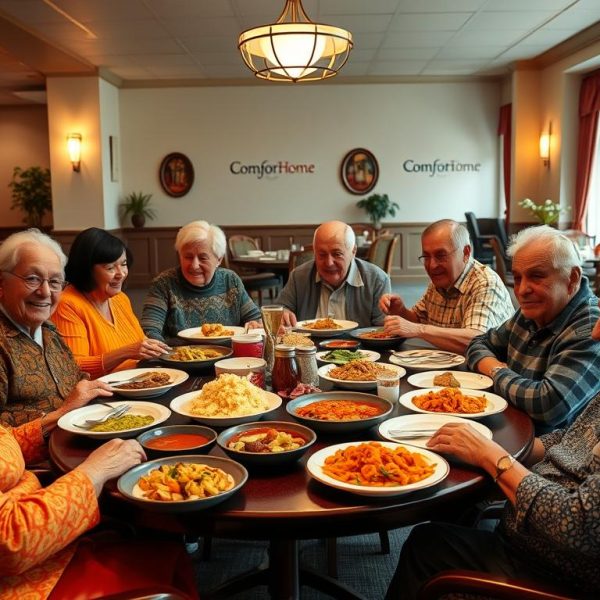Imagine sitting beside a loved one who is nearing the end of their journey. The room is filled with a mixture of emotions—hope, sorrow, and a deep sense of compassion. This is a moment where every touch, every word, and every decision matters profoundly. Now, picture this scene from a cultural perspective. For some, the experience of death is intertwined with specific rituals and beliefs that shape their final days. Understanding and embracing these cultural competence can make all the difference in providing compassionate and effective end-of-life care.
The Impact of Culture on End-of-Life Care
Consider Maria, a 78-year-old woman from a traditional Hispanic family. Maria’s family views death not as an end but as a transition to a different phase of existence. They have a rich cultural tradition of holding a “velorio,” a vigil that lasts through the night to honor the dying and celebrate their life. For Maria’s family, this vigil is not merely a ceremony; it’s a fundamental part of how they cope with loss and express their love and respect for their loved one.
During Maria’s final days, her family’s cultural practices became a central focus of her care. The healthcare team had to navigate not only Maria’s medical needs but also ensure that the velorio was honored in a way that aligned with her family’s traditions. They coordinated with local religious leaders to ensure that the vigil could proceed smoothly and respectfully, incorporating Maria’s favorite hymns and familiar faces from the community into the event.
In contrast, let’s think about Raj, an elderly gentleman from a devout Hindu family. For Raj, the process of dying involves specific rituals and rites, such as the chanting of mantras and the involvement of a priest to ensure a peaceful transition to the afterlife. His family places great importance on these traditions as a way to ensure his soul’s journey is smooth and respectful.
When Raj was admitted to hospice care, his family requested that a priest be present for daily prayers and rituals. They also preferred minimal medical intervention, emphasizing spiritual care over aggressive treatments. The healthcare team, recognizing the significance of these practices, adapted Raj’s care plan to accommodate his family’s needs. They arranged for a space within the hospice where the rituals could take place, ensuring Raj’s final moments were as spiritually fulfilling as they were comfortable.
Both Maria and Raj’s stories illustrate how deeply cultural beliefs can shape end-of-life experiences. As healthcare practitioners, understanding these cultural dimensions is crucial in providing respectful and personalized care.
The Importance of Cultural Competence
Cultural competence in end-of-life care means more than just acknowledging diversity; it involves actively learning about and integrating cultural beliefs into care practices. Consider the story of Dr. Lisa, a palliative care nurse who has worked with patients from various cultural backgrounds. One day, she encountered a patient named Amina, a Muslim woman whose family was adamant about keeping her in a quiet, serene environment, away from any medical interventions that might disrupt her spiritual peace.
Dr. Lisa faced a challenge: how could she respect Amina’s cultural beliefs while ensuring that she received the medical care she needed? By actively listening to Amina’s family and working with a cultural mediator, Dr. Lisa was able to tailor a care plan that honored Amina’s religious practices while also addressing her medical needs. This experience highlighted the significance of cultural sensitivity and the ability to adapt care practices to fit individual preferences and beliefs.
For Dr. Lisa, it was not just about implementing specific rituals or practices; it was about fostering a deeper understanding of Amina’s cultural context and integrating that understanding into her care approach. This meant collaborating with Amina’s family to establish a care plan that balanced medical needs with spiritual comfort, ensuring that Amina’s final days were as fulfilling and respectful as possible.
Navigating Communication and Decision-Making
Effective communication is another cornerstone of cultural competence. Take, for instance, the experience of Mark, a healthcare provider working with a family from a collective decision-making culture. In this culture, decisions are made by the entire family or community rather than by the individual alone. Mark needed to navigate this dynamic while respecting the family’s role in the decision-making process.
The challenge was evident when Mark had to discuss end-of-life options with the Patel family, who were deeply involved in making decisions for their patriarch, Mr. Patel. Mark knew that addressing the family as a unit rather than focusing solely on Mr. Patel’s individual preferences was crucial. By engaging the entire family in discussions, Mark was able to ensure that Mr. Patel’s care plan reflected the collective values and preferences of his loved ones, fostering a more supportive and inclusive care environment.
Mark’s approach involved setting up family meetings where all members could voice their concerns and preferences. He also made sure to provide comprehensive information about the available care options, ensuring that the family was well-informed and could make decisions that aligned with their collective values. This approach not only respected the family’s decision-making process but also facilitated a more collaborative and harmonious care experience.
Addressing Pain and Pain Relief Preferences
Pain management is a critical aspect of end-of-life care, and cultural differences can significantly influence how pain is perceived and managed. Imagine a patient named Mei, who comes from a culture where expressing pain openly is often seen as a sign of weakness. Mei’s reluctance to report her pain posed a challenge for her care team.
To address this, her nurse, Sarah, adopted a culturally sensitive approach by using indirect methods to assess Mei’s comfort level, such as observing her physical signs of discomfort and engaging in gentle conversations about her needs. Sarah also explored non-pharmacological pain relief options, like acupuncture and traditional herbal remedies, which resonated with Mei’s cultural practices. This approach not only helped manage Mei’s pain effectively but also respected her cultural beliefs and preferences.
In another scenario, consider David, a patient whose cultural background emphasized the use of traditional medicine. David’s family preferred herbal remedies over conventional pain medications. The healthcare team, recognizing the importance of respecting David’s cultural practices, worked with herbalists and incorporated these remedies into his care plan while also monitoring their effects to ensure his comfort and safety.
Strategies for Culturally Sensitive Care
To provide culturally sensitive end-of-life care, healthcare practitioners can adopt several strategies:
- Develop Cultural Competence: Actively seek knowledge about different cultural beliefs and practices related to end-of-life care. This includes understanding specific rituals, traditions, and decision-making processes that may affect care. Training programs and workshops on cultural competence can be valuable resources for healthcare professionals looking to enhance their understanding.
- Build Trust and Establish Relationships: Take the time to build a trusting relationship with patients and their families. Show empathy, listen actively, and acknowledge their cultural values and preferences. Building rapport with patients and their families can lead to more effective communication and a deeper understanding of their needs and expectations.
- Provide Education and Information: Offer educational resources about end-of-life care that are tailored to the cultural context of the patient. Use culturally appropriate language and visuals to ensure the information is accessible and relevant. Providing clear and culturally sensitive information can empower patients and families to make informed decisions about their care.
- Collaborate with Interpreters and Cultural Mediators: When language barriers exist, work with professional interpreters or cultural mediators to facilitate clear and respectful communication. This helps ensure that patients and families fully understand their care options and can make informed decisions. Additionally, cultural mediators can help bridge gaps in understanding and address any cultural nuances that may arise.
- Respect Cultural Rituals and Traditions: Be open to accommodating cultural rituals and traditions related to death and dying. This may involve adjusting care practices to honor these traditions while maintaining a focus on the patient’s well-being. Understanding and integrating cultural rituals into care plans can contribute to a more holistic and respectful approach to end-of-life care.
Conclusion: A Journey of Compassion and Respect
As we reflect on Maria, Raj, Amina, Mei, and countless others, it becomes clear that embracing cultural competence in end-of-life care is not just a professional responsibility but a deeply human endeavor. By understanding and respecting the cultural backgrounds of patients, healthcare practitioners can provide care that is not only medically effective but also profoundly compassionate.
Navigating the complexities of end-of-life care through a cultural lens requires empathy, open-mindedness, and a commitment to continuous learning. It’s about creating an environment where every patient’s final journey is marked by dignity, respect, and an unwavering commitment to their values and beliefs.
In the end, embracing diversity in end-of-life care enriches our practice and enhances the quality of care we provide. It is a journey that transforms both patients and practitioners, leading to a more inclusive and compassionate approach to one of life’s most profound experiences. As healthcare professionals, we have the privilege and responsibility to honor this diversity, ensuring that every individual’s final moments are met with the utmost respect and care.









I’ve been surfing on-line greater than three hours these days, but I never found any attention-grabbing article like yours. It is lovely worth enough for me. Personally, if all site owners and bloggers made just right content material as you did, the net can be a lot more useful than ever before. “When there is a lack of honor in government, the morals of the whole people are poisoned.” by Herbert Clark Hoover.
I just couldn’t depart your site prior to suggesting that I really enjoyed the standard information a person provide for your visitors? Is gonna be back often to check up on new posts
It¦s really a great and helpful piece of info. I am happy that you shared this useful information with us. Please keep us informed like this. Thank you for sharing.
This is really interesting, You are a very skilled blogger. I have joined your feed and look forward to seeking more of your excellent post. Also, I have shared your web site in my social networks!
Great post, you have pointed out some good details , I as well think this s a very great website.
Lovely just what I was looking for.Thanks to the author for taking his time on this one.
Only wanna comment that you have a very nice internet site, I enjoy the pattern it actually stands out.
You have brought up a very excellent details, thanks for the post.